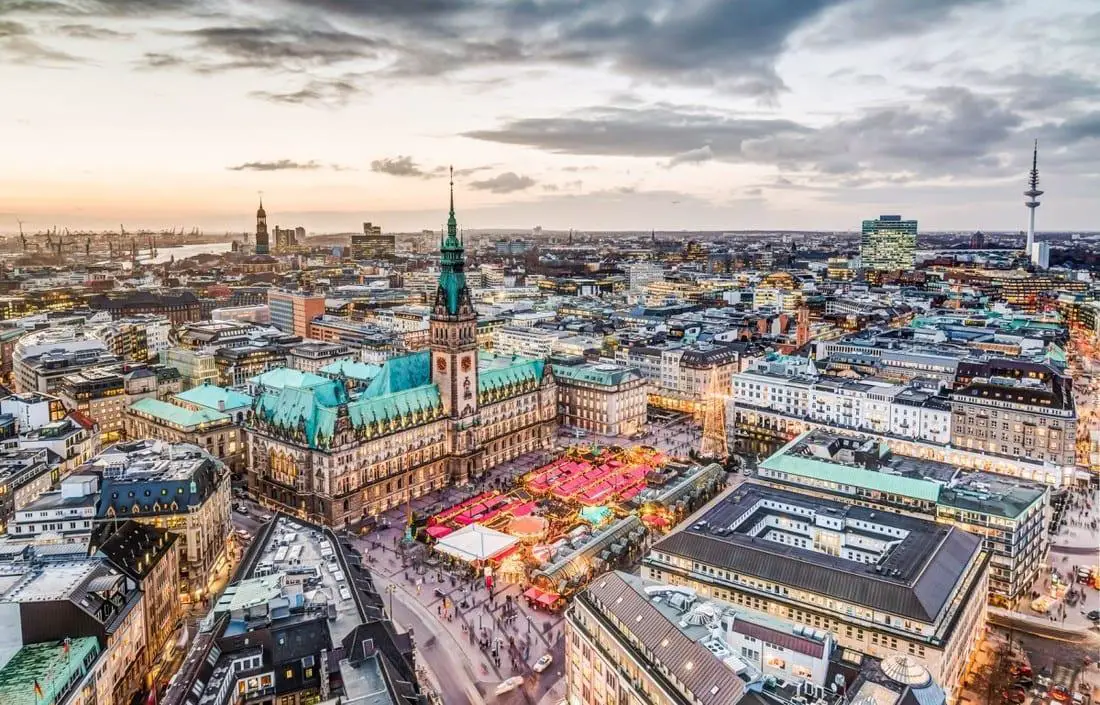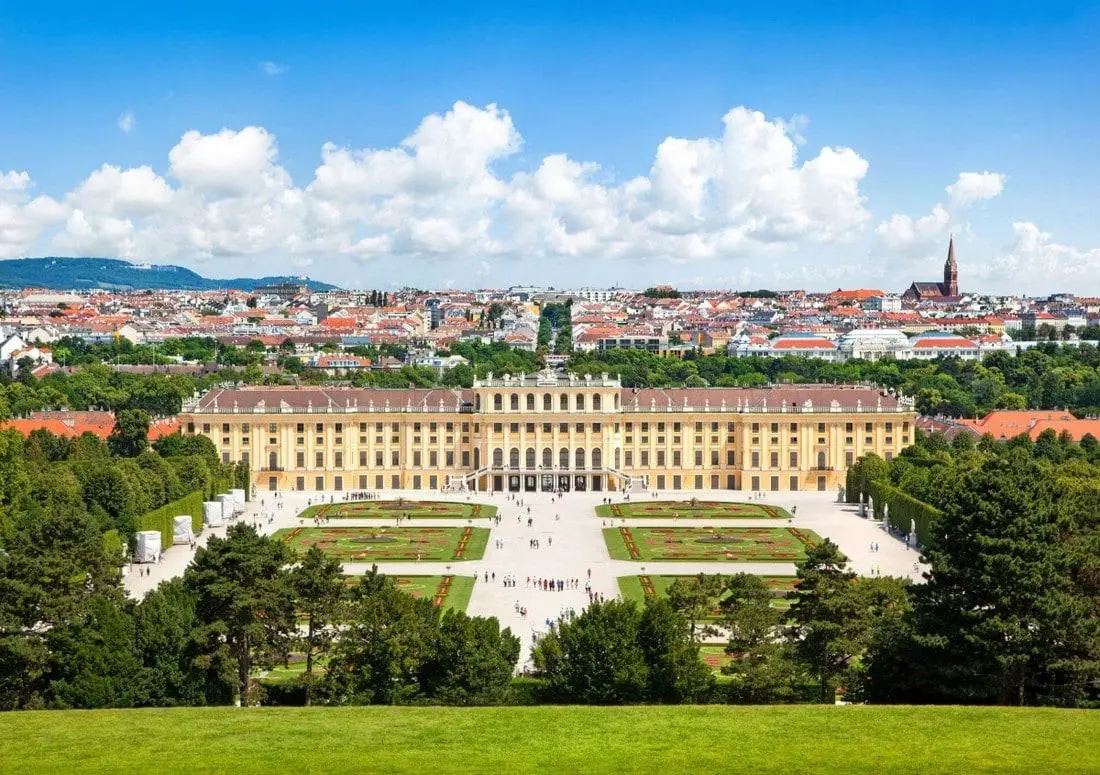Sure, we’re all familiar with the beauty of the big contenders – Paris, Rome, Venice, Barcelona.
When someone mentions Budapest or Hungary, beauty probably isn’t the word that first comes to mind. But Budapest is GORGEOUS, definitely among the most beautiful European cities.
I was so pleasantly surprised when I arrived – the beauty definitely adds to the reasons why Budapest should be your first solo trip. Needless to say, compiling this list was super-easy. Here are the most Instagrammable, beautiful places in Budapest.
Planning a trip to Budapest? These Budapest travel tips by locals will save you a lot of unnecessary stress!
1. St. Stephen’s Basilica
St. Stephen’s Basilica is named for the first King of Hungary, who was attributed with converting the Magyars to Catholicism.
Technically, the building isn’t a basilica, it’s a church – but Pope Pius XI bestowed St. Stephen’s with the title ‘Basilica Minor’ in 1931. In 1993 it was reclassified as a cathedral.
There is a fantastic view at the top of the dome – you can take a lift or the 302 steps to the top!
The right hand of St. Stephen is found in the Basilica, in the Chapel of the Holy Right. Every year on August 20th, the mummified hand is paraded around the streets of Budapest on the anniversary of St. Stephen’s death.
St. Stephen’s Basilica boasts the biggest bell in Hungary (located in the right tower), weighing 9 tons!
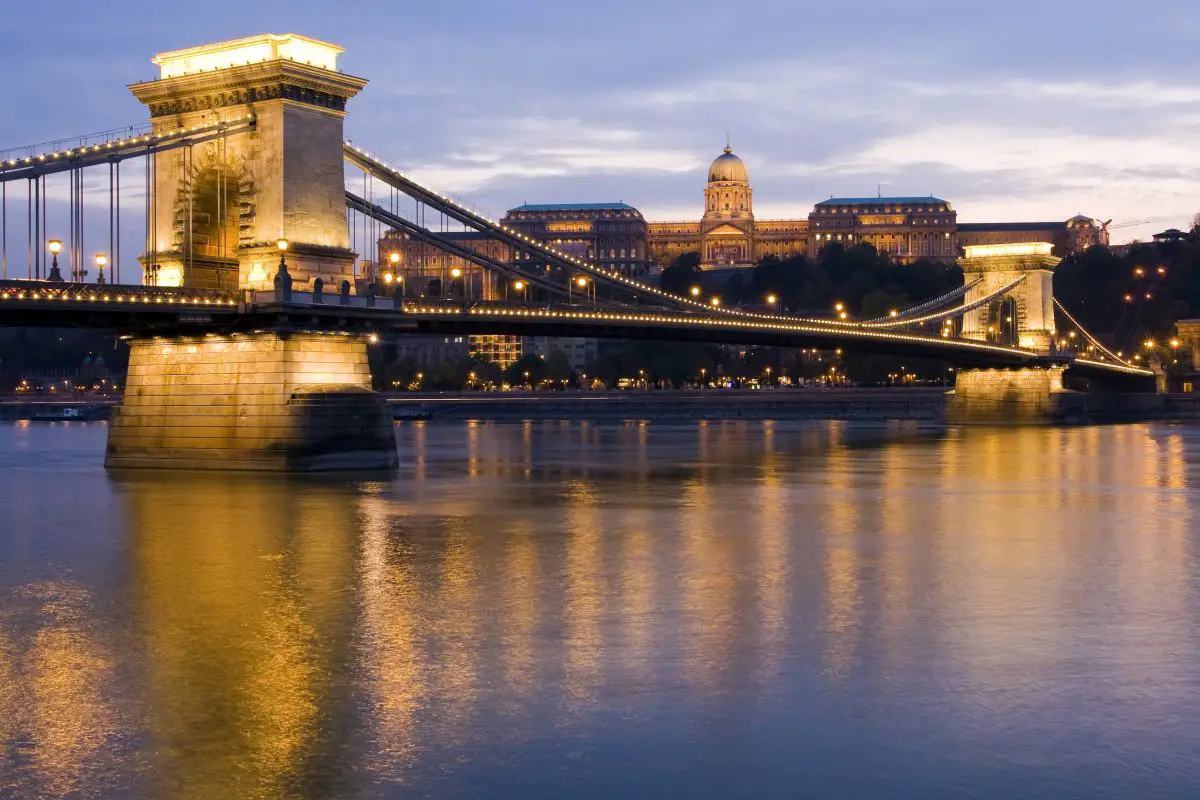
2. Chain Bridge
The Széchenyi Chain Bridge was the first permanent stone bridge connecting Buda and Pest. It’s a suspension bridge that spans the width of the Danube river.
Construction on the bridge began in 1842 and ended sometime between 1848-1849 during the Revolution & War of Independence.
Some of the first pedestrians to cross the Chain Bridge were soldiers of the Hungarian Army of Independence, as they retreated from Austrian troops. The Austrians attempted to blow up the bridge, but the explosives did not go off.
According to local legend, the sculptor of the giant lions’ heads on the bridge portal forgot to carve tongues for the lions. During the opening ceremony, a boy commented on this. The sculptor got so upset that he jumped off the bridge into the Danube.
**Apparently, the lions do have tongues, but they are only visible from above
In 1945, the Germans destroyed the bridge during an attack on the city. By 1949, 100 years after its completion, the bridge was rebuilt.
The picturesque historic stone bridge straddles the Danube between Széchenyi Square on the Pest side and Clark Ádám Square in Buda, located right beneath Castle Hill.
A tunnel was dug under Castle Hill to provide easier access to the places on the other side – the exact same length as the bridge (380m). Locals joke that when it rains, the bridge slides into the tunnel to keep from getting wet.
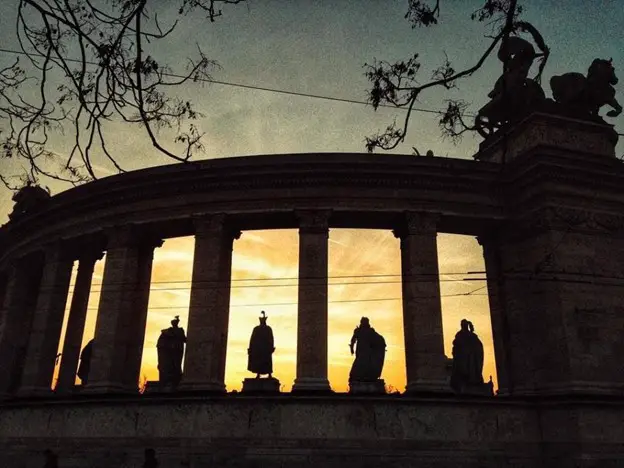
3. Hero’s Square
Hero’s Square, aka Hősök tere, is an open plaza built in 1896 to commemorate Hungary’s 1000th birthday.
The archangel Gabriel is situated on the center pillar holding a crown. Gabriel was said to have appeared to St. Stephen & offered him the crown of Hungary.
There’s a tiny bit of truth to this – however, it was Pope Sylvester II who gave St. Stephen the crown of Hungary, not the angel Gabriel. The crown is now kept in Parliament.
On a ledge below the statue of Gabriel are the seven chieftains who led the Magyar tribes to Hungary, leading to the country’s settlement.
Situated on the semi-circular colonnades are Kings and heroes of Hungary. Initially, five of the spots were reserved for members of the ruling Habsburg dynasty – these five were replaced by Hungarian Freedom Fighters when the plaza was rebuilt after its destruction in WWII.
There is a statue on top of each side of both colonnades – four in total. These statues represent war, work & welfare, peace, and knowledge & glory. The Hungarian War Memorial is in front of the column, honoring the kings and heroes of Hungary.

4. Thermal Baths
Budapest is known as the City of Baths, and for good reason. Gellert was built sometime between 1912 and 1918, and is the most photographed spa in Hungary.
Széchenyi Spa, built in August of 1927, is the biggest in all of Europe. At one time, the spa was separated to two sides – Soviet soldiers to the right, public to the left.
The water in the hippo pool at Budapest Zoo & Botanical Gardens is sourced from the same springs used by Széchenyi. The water is similar in chemical composition to the waters of the Nile.
Budapest has some Turkish baths dating back to the 16th and 17th centuries! The oldest in the city are Rudas, Veli Bej (Császár), and Király.
Balneotherapy is the treatment of pain by bathing in thermal waters.
Tips For The Baths:
- Bring flip flops unless you want to purchase some super uncomfortable ones from the spa. Flip flops are not available to rent.
- All of the baths in Budapest require a bathing suit. Some do not allow burkinis.
- All of the baths, except for Rudas, are co-ed.
- Some baths offer additional services such as massage or manicure/pedicure.
- If possible, bring your own towel.
- If you’d like to swim in the actual pools available, you will need a swim cap.

5. Dohány St. Synagogue
Built in 1859, the Dohány Street Synagogue is the largest in Europe, second largest in the world. The Central Synagogue in NYC is an almost-exact replica.
During the early years of WWII, the synagogue was used as a German radio base.
For a time, Adolf Eichmann had an office in the women’s balcony, behind the rose window.
Between 1944-1945, between eight and ten thousand people died in the ghetto where the synagogue is located. There are two thousand people buried on site.
You may notice that Dohány is not lined up with the street – this is because synagogues must face east, in the direction of Jerusalem. In case you find yourself geographically disoriented, at least you’ll know which way is east!
Tony Curtis and Estée Lauder, both of Hungarian-Jewish descent, contributed to the restoration of the synagogue following the communist era.

6. Gellert Hill
Gellért Hill is a 140m high Dolomite rock offering sweeping views of Pest and the Danube river.
The hill and surrounding areas are deemed a UNESCO World Heritage Site, along with the Banks of the Danube.
St. Stephen invited Bishop Gellért over from Italy to help convert Hungarians to Christianity. Legend has it, Pagans rolled him down (what is now) Gellért Hill into the Danube in 1046.
Some people refer to Gellért Hill as the Citadella, which is a fortress built on top of the hill by the Habsburgs; allegedly, the citadel was built to keep rebellious Hungarians in check.
Did you know that Hungary has its own Statue of Liberty? Yup! Erected in 1947, the statue commemorates the liberation of Budapest and Hungary from Nazi rule (pictured above).
7. Liberty Bridge
The Liberty Bridge is the shortest bridge in the city, erected in October of 1896 as part of the Millennium celebrations of Hungary’s 1000th birthday.
Turul statues guard both portals of the bridge. Turuls are falcon-like birds that were heavily incorporated into ancient Hungarian mythology.

8. New York Cafe
New York Cafe was opened in 1894, and was the hub of literary and artistic life in Budapest – think Les Deux Magots in Paris, Harry’s Bar in Venice, or Bar Marsella in Barcelona. It is part of the neighboring New York Palace Hotel.
After its destruction during WWII, the building became home to a sporting goods shop. In 1954 it was reopened under the name Hungaria, but it was nowhere near its former glory.
It wasn’t until 2006, when it was reopened after being purchased by Italian luxury hotel chain Boscolo, that the magic and splendor returned to Budapest’s iconic coffeehouse.
9. Hungarian Parliament
The Hungarian Parliament building is the largest in Hungary. It’s cupola stands at 96m high (the same as St. Stephen’s Basilica), significant because the Hungarian Conquest that gained independence was in 896.
Parliament has its own library, containing the greatest number of Hungarian Parliamentary documents in the country (I feel like this isn’t that impressive, considering it’s…. Parliament….).
It’s at Parliament that you can find St. Stephen’s Holy Crown that Pope Sylvester II bestowed upon him, along with other royal insignia.
There are some places on the building where you can still see bullet marks on the walls from WWII and the Revolution of 1956.
Whoever was overseeing the restoration decided to leave them – they’re particularly noticeable around the windows on the side of the square.
10. buda castle
Buda Castle was originally built in 1356, but has since undergone many transformations. Sometime around 1400 it was replaced with a Gothic palace. When Budapest was recaptured after the Turks ruled the city between 1541-1626, it was left in ruins.
In the 18th century the Habsburgs built a smaller version, but after the Austro-Hungarian compromise, the castle was once again re-built and expanded.
Then AGAIN, in 1944, during a battle between the Red Army and the Wehrmacht, the building was once again destroyed. Reconstruction began in 1950, but the castle is not what it once was. The building’s interior is completely devoid of any personality – the instagrammable spots are all on the outside!
Buda Castle and the surrounding area is a UNESCO World Heritage Site.
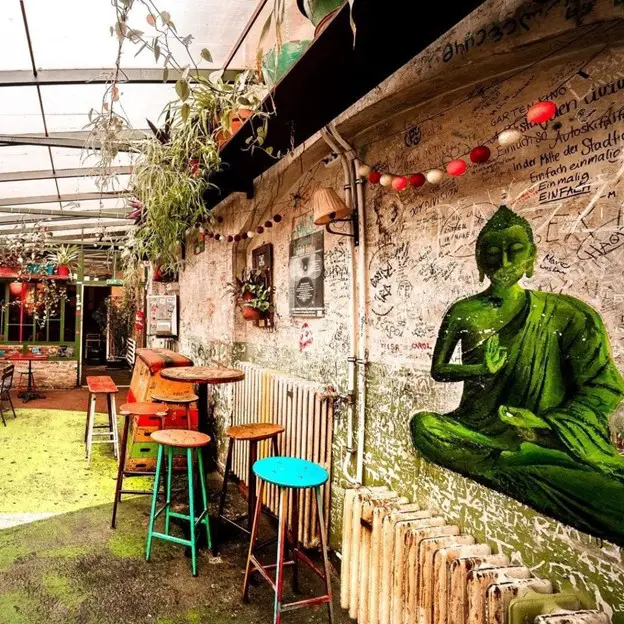
11. Ruin Bars
The ruin bars haven’t been around very long – around 2002-2004 they started gaining a lot of traction. Today, the ruin bars are one of the top attractions for visitors to Budapest.
Ruin bars are scattered throughout District VII, the old Jewish Quarter. After the deportation of 10,000 Jews during WWII, homes and stores were left abandoned and dilapidated.
The owners of Szimpla Kert (the original Ruin bar – and most popular) bought the space and instead of renovating, they chose to work with what was available to them.
They decorated the space with vintage and mismatched furniture, string lights, and literally any other thing you could think of that doesn’t fit in. But it does. It all melds so well together to create an atmosphere that’s unlike any other bar or pub I’ve ever been to (and that’s saying a lot).
This idea gained in popularity pretty quickly – pretty soon, the District VII buildings in varying states of deterioration were brought back to life. This area was jam-packed every night I was in Budapest.
Catching the early morning trains, I’d walk down Kazinczy utca en route to the station from my Airbnb – the streets would be flooded. It was pretty amusing, and not once did I feel unsafe.
The bars aren’t just bars – they also serve as communal spaces, concert venues, flea & farmer’s markets, etc. So whether you’re into the bar scene or not, you have an excuse to check out these extraordinary places.
12. Aria Hotel Budapest
This place is a photographer’s dream. The Aria Hotel Budapest is a luxury music-themed hotel located near to St. Stephen’s Basilica. The hotel boasts a year-round rooftop garden with a 360º view of the surrounding city.
If you’re staying here, take advantage of the free wine and cheese in the afternoons!

13. Funicular
The Budapest funicular, aka Budavári Sikló, opened in 1870 as a means of getting from Clark Ádám tér at the end of the Chain Bridge to Castle Hill – without sweating your ass off.
After its destruction during WWII, it was repaired and restored in its vintage state, re-opening in 1986. In 1987 it was named a UNESCO World Heritage Site.
The funicular runs every ten minutes, so don’t be put off if there’s a line. My body temp runs warm, and I trekked up Castle Hill by foot en route to Fisherman’s Bastion – yeah. I probably would take the funicular next time.

14. Great Market Hall
Great Market Hall, otherwise known as Nagyvásárcsarnok, is the largest and most popular market in Budapest. It was built in 1987 and is comprised of three floors offering produce, meats and cheeses, spices, clothing, and virtually anything else you can imagine.
Great Market Hall isn’t open on Sundays, but if you’re interested in a guided tasting and tour, head there on a Saturday.
Locals generally do their shopping early in the morning. Late morning or early afternoon will be least crowded, at least on weekdays.

15. Street Art In Jewish District
The street art scene in District VII is booming, and has been consistently over the years, especially since the rise of the Ruin Bars. Regardless of whether you’re taking yoga photos, selfies, family photos, or anything else – you’ll be sure to find a mural that speaks to you for the perfect instagrammable place in Budapest.
The Façade Rehab Project helped to quickly facilitate this, when they told the citizens of the city to draw whatever they wanted on the decaying buildings.
Most of the super large murals, those that take up entire buildings, were sponsored by the Façade Rehab Project. In some areas, though, you can see smaller works that were done by independent artists.
The murals are representative of a myriad of things, from dark history to Rubik, the man who invented the cube, who was a famous Budapestian.
16. Fisherman’s Bastion
Here we go. The structure that is, in my opinion, one of the most beautiful in all of Europe – and definitely the most beautiful in Budapest. Fisherman’s Bastion, or, Halászbástya – probably the MOST instagrammable place in Budapest.
Fisherman’s Bastion is situated on Castle Hill, on the Buda side of the Danube. It was designed and built between 1895 and 1902, as part of the series of Millennial developments for Hungary’s 1000th birthday.
The building looks like a fairy tale castle out of a Disney movie. It was styled to resemble the old medieval architecture circa 1000 A.D. The seven towers of Fisherman’s Bastion represent the seven chieftains who settled in the city in 896. And of course, you can find a statue of St. Stephen at Fisherman’s Bastion as well.
It was built on the site of the old ramparts that had been defended by local fishermen who lived in Víziváros, a fishing village nearby.
Fisherman’s Bastion was damaged during WWII, and restored by the sons of the original architect, Frigyes Schulek.
As with any major (and gorgeous) attraction in a major city, if you want the perfect photo, you should aim to get there by sunrise, before the tourists descend.
What is the most beautiful place in Budapest in your opinion?
Comment below and let us know!
Did you Enjoy this article?
Share it with your friends and family on FACEBOOK, TWITTER AND PINTEREST

